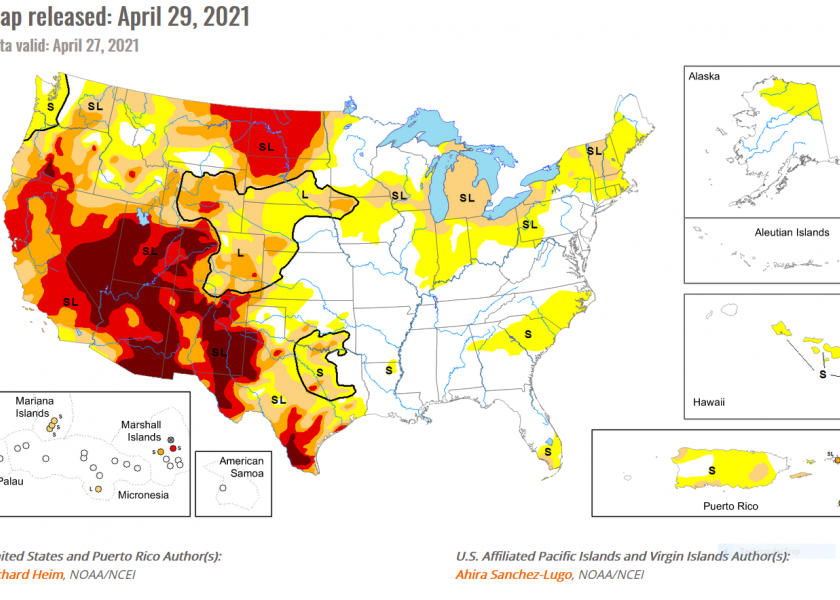Dry Conditions Intensify Across Upper Midwest, West

Drought or abnormal dryness expanded or intensified across parts of the West and upper Midwest, according to the weekly U.S. Drought Monitor, released on Thursday.
Much of the Ohio Valley states, and Iowa to Lower Michigan, had little to no precipitation this past week.
USDA statistics show that 30% of Michigan is experiencing topsoil moisture that is short to very short (dry to very dry), an increase of 17% over the last week. The same topsoil moisture concern by USDA was noted as increased to 34% of Iowa, 25% of Minnesota, and 21% of Wisconsin.
Farm Journal Field Agronomist, Ken Ferrie, addresses drought concerns in this Boots In The Field Podcast article:
Some moisture relief is expected in the week ahead.
“During April 29-May 3, another Pacific system will move into the country,” the Monitor authors report. “These weather systems are forecast to spread an inch or more of precipitation across the southern Plains, Lower to Mid-Mississippi Valley, Tennessee and Ohio Valleys, southern Great Lakes, and Northeast.
“Bands of heavy precipitation – 3 inches or more – are expected across Texas to Arkansas and along the Ohio River. An inch or more of precipitation is projected to fall across parts of northeast Colorado, Wyoming, and northwest Washington.
"Half an inch or less of precipitation should fall across the Southeast from Florida to Virginia, New Mexico to the central Plains, the rest of the Great Lakes, and central to northern Rockies. No precipitation is forecast to fall over much of the northern Plains and most of the rest of the West.”
The authors of the weekly U.S. Drought Monitor are Richard Heim and Ahira Sanchez-Luog, both with the National Oceanic and Atmospheric Administration (NOAA)/ National Centers for Environmental Information (NCEI).
Complete details are available here: https://droughtmonitor.unl.edu/
I-80 Planting Tour: Ohio Farmers Dodge Snow and Cold Weather
Ferrie: Let Weather, Soil Conditions Guide Planting Decisions







